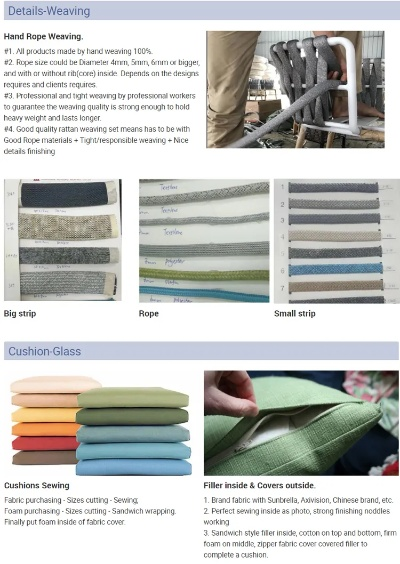Standards for Textile Shrinkage A Comprehensive Guide
This comprehensive guide provides a thorough overview of the standards for textile shrinkage, including definitions, measurement methods, and recommended practices. It covers various types of textile materials, such as cotton, polyester, and nylon, and discusses factors that affect shrinkage, such as fabric construction, dyeing processes, and environmental conditions. The guide also includes information on how to calculate shrinkage and how to interpret shrinkage data to ensure proper textile processing and quality control. Overall, this guide is essential for anyone working with textile materials and seeking to understand and comply with industry standards.
Introduction: Textile shrinkage is a common problem in the manufacturing and use of textile products. It refers to the reduction in size of fabric or other textile materials due to moisture absorption, heat, or chemical reactions. This phenomenon can result in uneven dimensional changes, reduced quality, and even damage to the product. Therefore, it is important for manufacturers to adhere to established standards for textile shrinkage to ensure that their products meet consumer expectations and comply with relevant regulations. In this guide, we will explore the different types of shrinkage, their causes, and how to measure and control them. We will also provide examples of standardized shrinkage tests and discuss the impact of these standards on industry practices. Let's dive into the details!

Types of Shrinkage:
-
Moisture-induced shrinkage: This type of shrinkage occurs when fabric absorbs moisture from the environment, causing it to contract. This can happen during storage, transportation, or use. For example, cotton fabrics may shrink slightly when exposed to high humidity levels.
-
Heat-induced shrinkage: This type of shrinkage occurs when fabric is subjected to high temperatures, such as during washing or ironing. The fibers can contract and reduce in size. For instance, woolen clothing may shrink when washed at high temperatures.
-
Chemical-induced shrinkage: This type of shrinkage occurs when fabric is exposed to chemicals that cause chemical reactions within the fibers. These reactions can lead to shrinkage or even degradation of the material. For example, silk fabrics may shrink when exposed to strong acids or alkalis.
Causes of Shrinkage:
-
Moisture absorption: Fabrics are made up of threads that can absorb moisture from the surrounding environment. This can be caused by factors such as humidity levels, exposure to water, or prolonged storage in damp conditions.
-
Heat exposure: High temperatures can cause fibers to contract, leading to shrinkage. This can occur during washing, drying, or ironing processes.
-
Chemical reactions: Exposure to chemicals that react with the fibers can cause shrinkage or degradation of the material. This can occur during processing or use of certain fabrics.
Measurement of Shrinkage:
-
Linear shrinkage: This is the percentage reduction in length of the fabric after being subjected to a specific condition. For example, if a sample of fabric shrinks by 10%, its linear shrinkage would be calculated as 10%.
-
Area shrinkage: This is the percentage reduction in area of the fabric after being subjected to a specific condition. For example, if a sample of fabric shrinks by 10%, its area shrinkage would be calculated as 10%.
Example: Let's say we have a sample of cotton fabric that was tested for linear shrinkage under normal conditions (humidity level 40%, temperature 20°C). According to the manufacturer's specifications, the linear shrinkage should not exceed 5%. If the sample actually shrinks by 7%, this would indicate an issue with the manufacturing process or the fabric's composition.
Standards for Shrinkage:
-
International standards: There are several international standards that regulate textile shrinkage, including the European Standard EN ISO 16949:2008 and the American Society for Testing and Materials (ASTM) standards. These standards provide guidelines for measuring and controlling textile shrinkage, ensuring that products meet consumer expectations and comply with regulations.
-
National standards: Different countries have their own national standards for textile shrinkage. For example, the United States has the American Non-Woven Fabric Standard (ANFIS) and the European Union has the European Standard EN ISO 16949:2008. These standards provide specific requirements for the measurement and control of textile shrinkage.
Impact of Standards:
-
Improved product quality: Adherence to standards for textile shrinkage ensures that products meet consumer expectations and comply with regulations. This leads to improved product quality, increased customer satisfaction, and better brand reputation.
-
Cost savings: By adhering to standards for textile shrinkage, manufacturers can reduce waste and improve efficiency. This can lead to cost savings and increased profitability.

-
Regulatory compliance: Compliance with standards for textile shrinkage helps manufacturers avoid legal penalties and fines associated with non-compliant products.
Conclusion: Textile shrinkage is a common problem in the manufacturing and use of textile products. Adherence to established standards for textile shrinkage is essential for ensuring product quality, consumer satisfaction, and regulatory compliance. By understanding the different types of shrinkage, their causes, and how to measure and control them, manufacturers can take proactive steps to minimize shrinkage and improve their products. Remember, the right standards can make all the difference in achieving success in today's competitive market!
纺织品在生产过程中常常会遇到缩水的问题,这不仅影响产品的美观度,还可能影响其使用性能,为了确保纺织品的质量和一致性,制定相应的缩水标准至关重要,本篇文章将围绕纺织品缩水标准展开讨论,并通过案例分析来说明缩水标准的实际应用。
纺织品缩水标准概述
纺织品缩水标准主要包括以下几个方面:
- 缩水率规定:规定了纺织品在一定条件下应达到的缩水率范围。
- 检测方法:规定了检测纺织品缩水率的具体方法。
- 影响缩水的因素:包括纤维类型、织造工艺、洗涤方式等。
缩水标准案例分析
某品牌纺织品缩水标准案例
某品牌在生产过程中,为了确保纺织品的质量和一致性,制定了以下缩水标准:
- 缩水率规定:该品牌要求纺织品在洗涤后应保持在一定范围内的缩水率,例如不超过5%。
- 检测方法:采用特定的检测仪器和方法进行缩水率的测量。
在此案例中,该品牌采用了先进的织造工艺和科学的洗涤方式,有效地控制了纺织品缩水率,该品牌还注重纤维类型和织造工艺的选择,以确保纺织品具有良好的吸湿性、透气性和耐用性。
纺织品缩水问题的解决措施
在实际生产过程中,还存在一些纺织品缩水问题,为了解决这些问题,可以采取以下措施:
- 加强质量控制:在生产前对纤维类型和织造工艺进行严格把关,确保产品质量。
- 采用先进的织造工艺和洗涤方式:采用自动化设备、智能控制系统等手段,提高织造效率和洗涤效果。
- 加强员工培训:提高员工对纺织品缩水问题的认识和重视程度,提高操作技能和质量控制意识。
纺织品缩水标准的应用实例
在实际应用中,可以通过以下实例来说明纺织品缩水标准的实际应用:
- 纺织品缩水标准的应用实例一:某服装品牌采用特定的纤维类型和织造工艺,严格控制缩水率,确保产品具有良好的吸湿性、透气性和穿着舒适度,该品牌还注重环保和可持续性,采用环保染料和环保材料。
- 纺织品缩水标准的应用实例二:某纺织企业通过引入先进的织造设备和洗涤技术,提高了织造效率和洗涤效果,同时降低了缩水率,该企业还注重生产过程的透明化和可追溯性,确保产品质量和一致性。
总结与建议
纺织品缩水标准是确保纺织品质量的重要保障,在实际应用中,应该根据具体情况制定相应的缩水标准,并加强质量控制和员工培训,还应该注重环保和可持续性,采用环保材料和工艺,还应该加强行业交流和合作,共同推动纺织行业的发展。
Articles related to the knowledge points of this article:
Understanding and Applying Textile DPN Value



